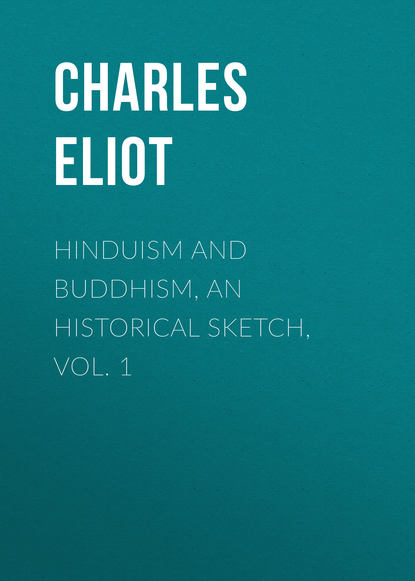По всем вопросам обращайтесь на: info@litportal.ru
(©) 2003-2024.
✖
Hinduism and Buddhism, An Historical Sketch, Vol. 1
Автор
Год написания книги
2018
Настройки чтения
Размер шрифта
Высота строк
Поля
3See for instance The Holy Lives of the Azhvars by Alkondavilli Govindâcârya. Mysore, 1902, pp. 215-216. "The Dravida Vedas have thus as high a sanction and authority as the Girvana (i.e. Sanskrit) Vedas."
130
3I am inclined to believe that the Lingâyat doctrine really is that Lingâyats dying in the true faith do not transmigrate any more.
131
3E.g. Brih.-Âr. III. 2. 13 and IV. 4. 2-6.
132
3This is the accepted translation of dukkha but perhaps it is too strong, and uneasiness, though inconvenient for literary reasons, gives the meaning better.
133
3The old Scandinavian literature with its gods who must die is equally full of this sense of impermanence, but the Viking temperament bade a man fight and face his fate.
134
3But see Rabindrannath Tagore: Sadhana, especially the Chapter on Realization.
135
3Cf. Shelley's lines in Hellas:—
"Worlds on worlds are rolling ever
From creation to decay,
Like the bubbles on a river
Sparkling, bursting, borne away."
136
3Nevertheless deva is sometimes used in the Upanishads as a designation of the supreme spirit.
137
3E.g. Brih.-Âr. Up. IV. 3. 33 and the parallel passages in the Taittirîya and other Upanishads.
138
3The principal one is the date of Asoka, deducible from an inscription in which he names contemporary Seleucid monarchs.
139
4E.g. a learned Brahman is often described in the Sutta Pitaka as "a repeater (of the sacred words) knowing the mystic verses by heart, one who had mastered the three Vedas, with the indices, the ritual, the phonology, the exegesis and the legends as a fifth."
140
4There had been time for misunderstandings to arise. Thus the S^{.}atapatha Brâhmana sees in the well-known verse "who is the God to whom we shall offer our sacrifices" an address to a deity named Ka (Sanskrit for who) and it would seem that an old word, uloka, has been separated in several passages into two words, u (a meaningless particle) and loka.
141
4Recent scholars are disposed to fix the appearance of Zoroaster between the middle of the seventh century and the earlier half of the sixth century B.C. But this date offers many difficulties. It makes it hard to explain the resemblances between the Gathas and the Rig Veda and how is it that respectable classical authorities of the fourth century B.C. quoted by Pliny attribute a high antiquity to Zoroaster?
142
4This applies chiefly to the three Samhitâs or collections of hymns and prayers. On the other hand there was no feeling against the composition of new Upanishads or the interpolation and amplification of the Epics.
143
4The Hotri recites prayers while other priests perform the act of sacrifice. But there are several poems in the Rig Veda for which even Indian ingenuity has not been able to find a liturgical use.
144
4Thus the Pali Pitakas speak of the Tevijjâ or threefold knowledge of the Brahmans.
145
4Or it may be that the ancestors of the Persians were also in the Panjab and retired westwards.
146
4R.V. v. 3. 1.
147
4See the Gaṇeśâtharvaśîrsha Upan. and Gopinatha Rao. Hindu Iconography, vol. I. pp. 35-67.
148
4See R.V. III. 34. 9. i. 130. 8; iv. 26. 2. vi. 18. 3; iv. 16. 13.
149
5In one singular hymn (R.V. x. 119) Indra describes his sensations after drinking freely, and in the Satapatha Brahmana (V. 5. 4. 9 and XII. 7. 1. 11) he seems to be represented as suffering from his excesses and having to be cured by a special ceremony.
150
5In some passages of the Upanishads he is identified with the âtman (e.g. Kaushitaki Up. III. 8), but then all persons, whether divine or human, are really the âtman if they only knew it.
151
5A.V. IV. 16. 2.
152
5The Indian alphabets are admittedly Semitic in origin.






